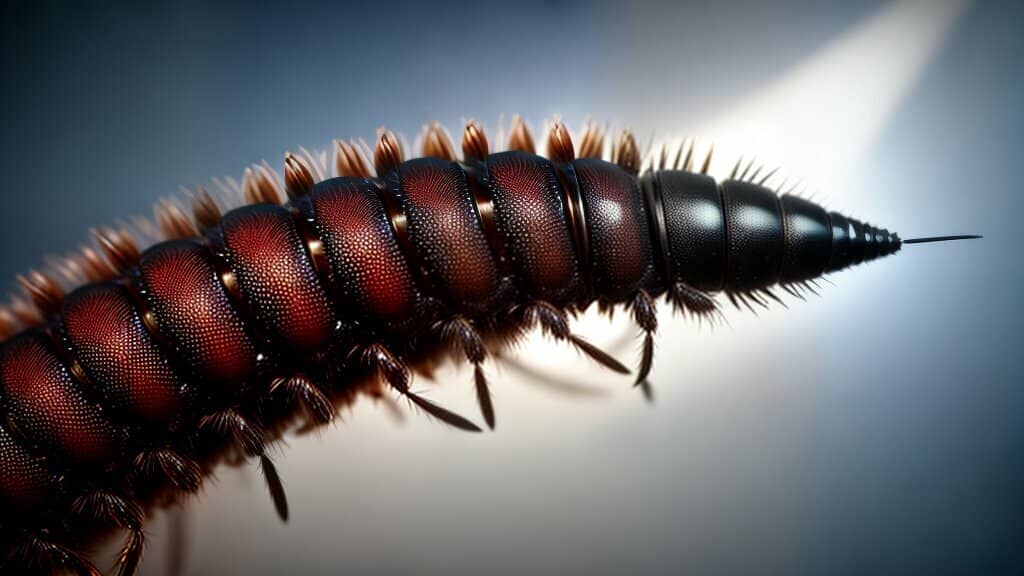Lyme Disease is a growing concern in the United States, with over 30,000 confirmed cases reported each year. The disease, which is transmitted through tick bites, can cause severe symptoms and long-term health issues if left untreated. That’s why Lyme Disease awareness programs are crucial for preventing its spread and ensuring early diagnosis and treatment.
In this article, we will discuss the basics of Lyme Disease, its causes, symptoms, and diagnostic methods. We will also explore the need for Lyme Disease awareness programs in the US, along with prevention strategies, education campaigns, support groups, and advocacy organizations. Additionally, we will highlight treatment options, including the holistic approach offered by Oasis Medical Institute, and long-term management and prevention strategies.
Key Takeaways:
- Lyme Disease awareness programs are essential for preventing the spread of the disease.
- The disease is transmitted through tick bites and can cause severe symptoms and long-term health issues if left untreated.
- Prevention initiatives, education campaigns, support groups, and advocacy organizations play a vital role in combating Lyme Disease.
- Oasis Medical Institute offers a holistic approach to Lyme Disease treatment.
- Long-term management and prevention strategies are crucial for individuals affected by Lyme Disease.
Understanding Lyme Disease: Causes, Symptoms, and Diagnosis
Lyme disease is an infection caused by the bacterium Borrelia burgdorferi. This bacterium is transmitted to humans through the bite of infected black-legged ticks, also known as deer ticks. While Lyme disease can affect anyone, it is most commonly found in the northeastern and midwestern regions of the United States.
Symptoms of Lyme disease can vary and often resemble those of the flu, making it difficult to diagnose. Early signs of the disease may include a red, expanding rash that resembles a bull’s eye, fever, chills, headache, fatigue, and muscle and joint aches. If left untreated, the infection can spread to other parts of the body and lead to more severe health issues.
Diagnosing Lyme disease can also be challenging, as traditional testing methods for the disease often produce false negative results. Doctors must use a combination of clinical symptoms and diagnostic tests to properly diagnose Lyme disease.
To prevent Lyme disease, it is essential to take preventative measures such as wearing protective clothing, using insect repellent, staying on marked trails when hiking, and thoroughly checking for ticks after being outdoors. Early detection and treatment of Lyme disease is crucial for preventing long-term complications of the disease.

The Centers for Disease Control and Prevention estimates that approximately 300,000 people are diagnosed with Lyme disease each year in the United States.
The Need for Lyme Disease Awareness Programs
Lyme Disease is an increasingly prevalent illness in the United States, with over 30,000 new cases reported each year. The disease is caused by bacteria transmitted through tick bites and can lead to serious health complications if left untreated.
Due to the high number of cases and potential long-term consequences, there is a significant need for Lyme Disease awareness programs in the US. These programs are crucial in educating the public about the disease, its symptoms, and prevention strategies.
According to the Centers for Disease Control and Prevention (CDC), early detection and prompt treatment are critical in preventing long-term complications. However, many individuals are not aware of the risks associated with Lyme Disease or how to properly protect themselves from tick bites.
Lyme Disease awareness programs can help bridge this gap by providing information and resources to those at risk. They can help individuals understand the importance of tick avoidance and proper removal techniques, as well as the importance of seeking medical attention if symptoms develop.
Additionally, awareness programs can help dispel common misconceptions about Lyme Disease, such as the belief that it is only prevalent in certain geographic areas or that it is easily curable. By educating the public about the true risks and complexities associated with the disease, these programs can help prevent the spread of misinformation and promote a more accurate understanding of Lyme Disease.
Overall, Lyme Disease awareness programs are vital steps in preventing the spread and long-term consequences of Lyme Disease. By providing education and resources to at-risk populations, these programs can help individuals protect themselves and seek treatment if needed.

Lyme Disease Prevention Initiatives and Strategies
Preventing Lyme Disease starts with taking proactive measures to reduce the risk of tick bites. By following certain precautions, individuals can significantly decrease their chances of contracting the disease.
Tick Avoidance: One of the most effective ways to prevent Lyme Disease is by avoiding areas where ticks are commonly found. These include wooded or grassy areas, particularly during the warmer months when ticks are most active. If spending time outdoors, individuals should wear long-sleeved shirts and pants to protect their skin and use insect repellent containing DEET or picaridin.
Tick Removal: Prompt and proper removal of ticks from the skin can also help prevent Lyme Disease. If a tick is found attached to the skin, it should be removed with tweezers as close to the skin as possible, without twisting or squeezing the tick. The bite area should then be cleaned with soap and water or rubbing alcohol.
| Picaridin vs DEET | |
|---|---|
| Picaridin | DEET |
| Odorless | Strong odor |
| Gentler on skin | Possible skin irritation |
| Eco-friendly | More harmful to the environment |
| Safe for children and pregnant women | May not be safe for children or pregnant women in high concentrations |
Using Insect Repellents: Insect repellents can provide an added layer of protection against tick bites. There are several types of repellents available, including those containing DEET and picaridin, both of which are recommended by the Centers for Disease Control and Prevention (CDC) for use against ticks. It is important to follow the manufacturer’s instructions and reapply as needed.
By following these prevention strategies, individuals can significantly reduce their risk of contracting Lyme Disease. However, it is important to note that these measures are not foolproof and regular tick checks and monitoring for symptoms are still crucial for early detection and treatment.

Lyme Disease Education Campaigns: Spreading Awareness
In addition to support groups, education campaigns are also crucial in spreading awareness about Lyme Disease. It is important to educate the public, especially those living in at-risk areas, about the risks and symptoms associated with the disease. These campaigns can also help people take preventative measures to reduce their risk of contracting the disease.
Lyme Disease education campaigns can take many forms, such as online resources, brochures, or social media campaigns. These campaigns often work in conjunction with local health departments, schools, and community organizations to reach a wider audience.
“The most important thing is to educate people about the disease, how it’s transmitted, how to recognize symptoms, and how to prevent infection,” said Dr. John Aucott, director of the Johns Hopkins Lyme Disease Clinical Research Center.

One successful example of a Lyme Disease education campaign is the Lyme Disease Association’s “Tick Talk” program, which provides educational resources and presentations to schools, community groups, and workplaces.
Another example is the “Be Tick Aware” campaign by the Connecticut Department of Public Health, which uses social media, billboards, and public service announcements to educate the public about the risks of tick bites and how to prevent them.
Through education campaigns, individuals can gain a better understanding of Lyme Disease, its symptoms, and the importance of prevention. By working together to spread awareness, we can take steps towards reducing the number of Lyme Disease cases in the United States.
Lyme Disease Support Groups: Finding Strength in Community
Lyme Disease can be a challenging illness to live with, but the support of others can make a significant difference in coping with the condition. Lyme Disease Support Groups offer individuals and families affected by the disease a place to connect with others who understand and share similar experiences.
These groups provide a supportive environment where members can share their challenges and triumphs, learn from each other’s experiences, and gain valuable insight into available treatments and resources. Support groups often provide a sense of community and belonging, reducing feelings of isolation and loneliness that can often accompany chronic illness.
In addition to emotional support, support groups may offer practical resources, such as educational materials and information on treatment options, Lyme-literate medical practitioners, and other healthcare professionals.
Those seeking support can find a directory of Lyme Disease Support Groups on the LymeDisease.org website. Additionally, local community centers and health organizations may offer support groups, and social media platforms such as Facebook may have groups available to join.

Joining a support group can be a valuable tool in managing Lyme Disease, both for individuals affected by the disease and their loved ones. The sense of community and resources available can help make the journey more manageable.
Lyme Disease Advocacy Organizations: Driving Change
Lyme Disease advocacy organizations play a crucial role in raising awareness and driving change in the fight against Lyme Disease. These organizations work tirelessly to advocate for better research, treatment, and prevention of the disease. They also provide valuable resources to individuals affected by Lyme Disease and their families.
One notable organization is the Global Lyme Alliance (GLA), whose mission is to conquer Lyme and other tick-borne diseases through research, education, and awareness. The GLA provides a wealth of information and resources on their website, including webinars, treatment guidelines, and support groups.
Another organization is LymeDisease.org, which seeks to empower patients and improve their quality of life through advocacy and education. LymeDisease.org offers a range of resources, including a patient handbook, physician referral tool, and a research library.
Advocacy organizations like these are crucial in raising awareness about Lyme Disease and pushing for advancements in research and treatment. Their efforts have already brought about significant change, but there is still much work to be done to combat this complex disease.

Lyme Disease Resources: Where to Find Reliable Information
When it comes to Lyme Disease, it’s essential to have access to reliable information to make informed decisions about prevention and treatment. Fortunately, there are several trustworthy resources available for individuals seeking accurate and up-to-date information on Lyme Disease.
Centers for Disease Control and Prevention (CDC)
The CDC is a go-to resource for information on all types of diseases, including Lyme Disease. Their website provides comprehensive information on Lyme Disease, including prevention tips, diagnosis, symptoms, and treatment options. You can also find resources on the latest research and advancements in Lyme Disease treatment.
Lyme Disease Association (LDA)
The LDA is a nonprofit organization that aims to raise awareness and support research on Lyme Disease. Their website provides a wealth of information on Lyme Disease, including educational resources, news updates, and support group information.
LymeDisease.org
LymeDisease.org is a patient-centered organization that provides support and resources to individuals affected by Lyme Disease. Their website features extensive information on Lyme Disease, including prevention measures, diagnosis, and treatment options. You can also find information on their advocacy efforts and online support groups.
American Lyme Disease Foundation (ALDF)
The ALDF is a nonprofit organization dedicated to improving the prevention and treatment of Lyme Disease. Their website offers resources on Lyme Disease, including prevention tips, diagnostic methods, and treatment options. You can also find information on their research initiatives and educational programs.
By utilizing these resources, individuals can stay informed about Lyme Disease and make informed decisions about their health. It’s essential to rely on credible sources, especially when it comes to healthcare.

Lyme Disease Outreach Efforts: Reaching at-risk populations.
Lyme Disease outreach efforts are critical in raising awareness and educating at-risk populations about the disease. According to the Centers for Disease Control and Prevention (CDC), Lyme Disease is most commonly transmitted through the bite of an infected deer tick. Therefore, individuals who spend time in wooded and grassy areas are more susceptible to tick bites and, consequently, the disease.
Outdoor enthusiasts, hikers, and children who spend time playing outdoors are at an increased risk of contracting Lyme Disease. The CDC recommends that individuals take precautions and follow prevention measures to reduce the risk of tick bites. However, many people are not aware of the disease or the steps they can take to protect themselves.
That’s where Lyme Disease outreach efforts come in. These initiatives are designed to educate and inform the public about Lyme Disease and its risk factors. By targeting at-risk populations and providing them with the necessary information, outreach efforts can help reduce the incidence of the disease and improve overall health outcomes.
One example of a successful Lyme Disease outreach program is the TickEncounter Resource Center. This program provides online resources and educational materials to help individuals identify ticks and take the necessary precautions to reduce the risk of tick bites. Moreover, the program offers tailored advice to specific groups, such as hikers, pet owners, and educators, to help them stay safe and informed about Lyme Disease.

Overall, Lyme Disease outreach efforts are an essential part of the fight against this disease. By educating at-risk populations about the disease and prevention measures, these initiatives can reduce the incidence of Lyme Disease and promote better health outcomes for all.
Lyme Disease Awareness Events: Bringing Communities Together
Lyme Disease awareness events are a powerful tool in bringing communities together to support the fight against the disease. These events provide an opportunity for individuals and organizations to unite and raise awareness about Lyme Disease, its symptoms, and available prevention and treatment methods.
Through these events, attendees can learn about the latest research and breakthroughs in the field, connect with others who have been impacted by Lyme Disease, and discover new resources and initiatives for Lyme Disease prevention and treatment.
| Benefits of Lyme Disease Awareness Events |
|---|
| Education: Attendees can learn about Lyme Disease, its symptoms, and available treatment options through informative seminars and workshops. |
| Community Building: These events bring together individuals and families impacted by Lyme Disease, fostering a sense of community and support. |
| Advocacy: Lyme Disease awareness events provide a platform for advocacy and the opportunity to push for improved research, treatment, and prevention methods. |
Lyme Disease awareness events take various forms, from walks and runs to educational seminars and charity events. These events are usually organized by non-profit organizations, advocacy groups, and healthcare providers with the goal of educating the public and raising awareness about the disease.
By attending these events, individuals can show their support for the fight against Lyme Disease and help to create a better future for those affected by this debilitating illness.

Image credit: seowriting.ai
Oasis Medical Institute: A Holistic Approach to Lyme Disease Treatment
For individuals seeking a holistic approach to Lyme Disease treatment, Oasis Medical Institute offers a comprehensive program led by medical director Dr. Francisco Contreras MD. With over 40 years of experience in integrative medicine, Dr. Contreras and his team provide a personalized treatment plan that combines conventional and complementary therapies.
Their approach focuses on enhancing the body’s natural healing abilities while targeting the underlying causes of Lyme Disease. The program includes a range of treatments, such as detoxification, immune support, and nutritional therapy. Patients also receive psychological and spiritual counseling to address any emotional stressors.
In addition to their standard treatment program, Oasis Medical Institute offers hyperthermia therapy as an alternative to traditional antibiotics. Hyperthermia therapy uses heat to kill bacteria and stimulate the immune system, providing a non-invasive and effective treatment option for Lyme Disease.
| Treatment Options | Benefits |
|---|---|
| Detoxification | Eliminates toxins and improves organ function |
| Immune Support | Strengthens the immune system and promotes healing |
| Nutritional Therapy | Provides essential vitamins and minerals for optimal health |
| Hyperthermia Therapy | Kills bacteria and enhances the immune system |
Oasis Medical Institute’s Lyme Disease treatment program has helped patients from all over the world achieve long-lasting results and improve their quality of life. Their approach to Lyme Disease treatment focuses on the whole person, addressing physical, emotional, and spiritual needs.

If you’re interested in learning more about Oasis Medical Institute’s Lyme Disease treatment program, you can book a consultation by calling 866-868-1992. Their team of experienced medical professionals is ready to answer any questions you may have and help you take the first step towards a healthier, Lyme-free life.
Lyme Disease Treatment Program at Oasis Medical Institute
For those seeking a comprehensive and holistic approach to Lyme Disease treatment, Oasis Medical Institute in Tijuana, MX offers a unique treatment program. Led by medical director Dr. Francisco Contreras MD, the program utilizes a combination of conventional and alternative therapies to address the root causes of Lyme Disease and promote overall wellness.
The Oasis Medical Institute Lyme Disease treatment program includes:
| Treatment | Description |
|---|---|
| Antibiotic Therapy | Conventional antibiotics are still the primary treatment for Lyme Disease and are used in combination with other therapies |
| IV Therapy | Intravenous therapy delivers high doses of vitamins and minerals directly into the bloodstream, boosting the immune system and supporting healing |
| Hyperthermia | Hyperthermia treatment involves raising the body’s temperature to stimulate immune function and destroy disease-causing pathogens |
| Oxygen Therapy | Oxygen therapy increases oxygen levels in the body, promoting healing and reducing inflammation |
| Detoxification | Detoxification therapies rid the body of harmful toxins and support overall health and wellness |
| Nutritional Counseling | Nutritional counseling helps patients make informed choices about their diet and lifestyle to support healing and prevent recurrence of the disease |
At Oasis Medical Institute, the focus is not just on treating the disease, but on treating the whole person. Patients receive individualized care and attention, and the program is designed to support both physical and emotional well-being. With a comprehensive approach to Lyme Disease treatment, patients can achieve lasting health and vitality.
Those interested in learning more about the Oasis Medical Institute Lyme Disease treatment program can book a consultation by calling 866-868-1992.

Additional Support: Lyme Disease Treatment Options and Resources
While Oasis Medical Institute offers a comprehensive and holistic approach to Lyme Disease treatment, there are also additional options and resources available for those seeking support. It is important to conduct thorough research and consult with healthcare professionals to determine the best course of action to manage the disease.
Some common treatment approaches include antibiotics, which are often prescribed by doctors to eliminate the Lyme bacteria from the body, and alternative therapies such as herbal supplements, acupuncture, and sauna therapy.
It is also crucial for individuals affected by Lyme Disease to have access to reliable information and resources to stay informed and up-to-date on developments in treatment and prevention. Some useful resources include the Centers for Disease Control and Prevention (CDC) website, which provides comprehensive information and guidelines on Lyme Disease diagnosis, treatment, and prevention, and the International Lyme and Associated Diseases Society (ILADS), which offers guidance and support for patients and healthcare providers.
Additionally, there are various online forums and support groups that provide a platform for individuals to connect with others experiencing similar challenges and share their stories and experiences. The Lyme Disease Association and the Global Lyme Alliance are two notable organizations that offer advocacy, education, and support for those affected by Lyme Disease.

“I’ve found so much comfort in connecting with others who are going through the same thing. It can be a lonely and frustrating experience, but being part of a support group has made all the difference.” – Sarah, Lyme Disease patient
Staying Vigilant: Long-Term Management and Prevention
While prevention is crucial to avoiding Lyme Disease, it’s also important to stay vigilant and take proper management steps in the long term. The following tips can help:
- Perform Tick Checks: After spending time outside, make sure to check yourself and your loved ones for ticks. Ticks can be small and difficult to spot, so be thorough in your search.
- Wear Protective Clothing: When outdoors, wear long sleeves, pants, and hats to reduce your risk of tick bites.
- Use Insect Repellent: Apply insect repellent to your skin and clothing to deter ticks from biting you.
- Monitor Symptoms: If you suspect you’ve been bitten by a tick or are experiencing any unusual symptoms, seek medical attention right away.
- Maintain a Healthy Lifestyle: A healthy diet and regular exercise can help boost your immune system and support your body’s natural defenses against Lyme Disease.
Remember, prevention and long-term management are key to combating Lyme Disease. By following these tips and staying informed about the latest developments, you can protect yourself and your loved ones from this harmful disease.

Lyme Disease Awareness Programs: Vital Steps for Prevention
In conclusion, Lyme Disease awareness programs play a crucial role in the prevention and management of Lyme Disease in the United States. By understanding the basics of the disease, individuals can take steps to protect themselves from tick bites and learn to recognize the symptoms.
Education campaigns, support groups, advocacy organizations, and outreach efforts are all critical tools that can be leveraged to increase awareness and understanding of Lyme Disease. Reliable resources can also provide individuals with accurate and up-to-date information about the disease.
Long-term management and prevention strategies, such as routine tick checks and seeking medical attention if symptoms arise, are key to staying vigilant and avoiding serious complications.
Finally, individuals seeking Lyme Disease treatment have access to a range of options, including the holistic treatment program offered at Oasis Medical Institute. With continued efforts in Lyme Disease awareness and prevention, individuals can take control of their health and help combat the spread of this increasingly prevalent disease.
FAQ
Q: What are Lyme Disease awareness programs?
A: Lyme Disease awareness programs are initiatives aimed at educating the public about the disease, its symptoms, and prevention measures.
Q: What is Lyme Disease?
A: Lyme Disease is an infectious disease caused by the bacteria Borrelia burgdorferi, transmitted to humans through the bite of infected black-legged ticks.
Q: How is Lyme Disease diagnosed?
A: Lyme Disease can be diagnosed through clinical evaluation, medical history, and laboratory tests, including blood tests to detect antibodies against the bacteria.
Q: Why do we need Lyme Disease awareness programs?
A: Lyme Disease awareness programs are essential due to the increasing prevalence of the disease and the potential long-term health consequences if left untreated.
Q: What are some prevention strategies for Lyme Disease?
A: Prevention strategies for Lyme Disease include avoiding tick-infested areas, wearing protective clothing, using insect repellents, and performing thorough tick checks after outdoor activities.
Q: How do Lyme Disease education campaigns help spread awareness?
A: Lyme Disease education campaigns play a vital role in spreading awareness by educating the public about the disease, its symptoms, and available treatment options.
Q: What are the benefits of joining Lyme Disease support groups?
A: Joining Lyme Disease support groups provides individuals with emotional support, an opportunity to share experiences, and access to valuable resources for managing the disease.
Q: How do Lyme Disease advocacy organizations drive change?
A: Lyme Disease advocacy organizations advocate for better research, treatment, and prevention, and raise awareness about the disease through various initiatives and campaigns.
Q: Where can I find reliable information about Lyme Disease?
A: Reliable information about Lyme Disease can be found on websites, publications, and other trustworthy sources dedicated to providing accurate and up-to-date information about the disease.
Q: How do Lyme Disease outreach efforts target at-risk populations?
A: Lyme Disease outreach efforts aim to educate specific at-risk populations, such as outdoor enthusiasts, hikers, and children, about the disease and prevention measures.
Q: How do Lyme Disease awareness events bring communities together?
A: Lyme Disease awareness events foster collaboration in the fight against the disease, bringing communities together and raising awareness about prevention, treatment, and support.
Q: What does Oasis Medical Institute offer for Lyme Disease treatment?
A: Oasis Medical Institute offers a holistic approach to Lyme Disease treatment, led by medical director Dr. Francisco Contreras MD, with an integrative treatment program.
Q: How can I book a consultation at Oasis Medical Institute?
A: To book a consultation at Oasis Medical Institute and learn more about their Lyme Disease treatment program, please call 866-868-1992.
Q: Where can I find additional support and resources for Lyme Disease?
A: In addition to Oasis Medical Institute, there are other treatment options and resources available for individuals seeking help with Lyme Disease.
Q: What are some long-term management and prevention strategies for Lyme Disease?
A: Staying vigilant with tick avoidance, proper tick removal techniques, and regular check-ups with healthcare providers are essential for long-term management and prevention of Lyme Disease.
Dr. Francisco Contreras, MD is a renowned integrative medical physician with over 20 years of dedicated experience in the field of integrative medicine. As the Medical Director of the Oasis of Hope Hospital in Tijuana, Mexico, he has pioneered innovative treatments and integrative approaches that have been recognized globally for the treatment of cancer, Lyme Disease, Mold Toxicity, and chronic disease using alternative treatment modalities. Dr. Contreras holds a medical degree from the Autonomous University of Mexico in Toluca, and speciality in surgical oncology from the University of Vienna in Austria.
Under his visionary leadership, the Oasis of Hope Hospital has emerged as a leading institution, renowned for its innovative treatments and patient-centric approach for treating cancer, Lyme Disease, Mold Toxicity, Long-Haul COVID, and chronic disease. The hospital, under Dr. Contreras's guidance, has successfully treated thousands of patients, many of whom traveled from different parts of the world, seeking the unique and compassionate care the institution offers.
Dr. Contreras has contributed to numerous research papers, articles, and medical journals, solidifying his expertise in the realm of integrative medicine. His commitment to patient care and evidence-based treatments has earned him a reputation for trustworthiness and excellence. Dr. Contreras is frequently invited to speak at international conferences and has been featured on CNN, WMAR2 News, KGUN9 News, Tyent USA, and various others for his groundbreaking work. His dedication to the medical community and his patients is unwavering, making him a leading authority in the field.
Contreras has authored and co-authored several books concerning integrative therapy, cancer, Lyme Disease and heart disease prevention and chronic illness, including "The Art Science of Undermining Cancer", "The Art & Science of Undermining Cancer: Strategies to Slow, Control, Reverse", "Look Younger, Live Longer: 10 Steps to Reverse Aging and Live a Vibrant Life", "The Coming Cancer Cure Your Guide to effective alternative, conventional and integrative therapies", "Hope Medicine & Healing", "Health in the 21st Century: Will Doctors Survive?", "Healthy Heart: An alternative guide to a healthy heart", “The Hope of Living Cancer Free”, “Hope Of Living Long And Well: 10 Steps to look younger, feel better, live longer” “Fighting Cancer 20 Different Ways”, "50 Critical Cancer Answers: Your Personal Battle Plan for Beating Cancer", "To Beat . . . Or Not to Beat?", and “Dismantling Cancer.”






















